Oracle Inventory Flexfields
- System Items
- Item Catalogs
- Item Categories
- Stock Locators
- Account Aliases
- Sales Orders
flexfields provided by other Oracle products:
- Accounting (Oracle General Ledger)
- Sales Tax Location (Oracle Receivables)
- Territory (Oracle Receivables)
You can use the System Items Flexfield (also called the Item Flexfield) for recording and reporting your item information. You must design and configure your Item Flexfield before you can start defining items.
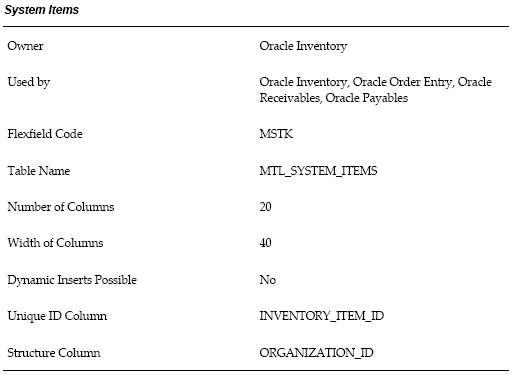
You must set up your OE: Item Flexfield profile option to specify the Item Flexfield structure that you will use for your Oracle applications.
Users can also set up the OE: Item Flexfield Entry Method profile option to specify your preferred method of entry for this flexfield.
You can optionally use the item flexfield to default item information for invoice, debit memo, and credit memo lines or you can enter your own line information.
This key flexfield supports only one structure.
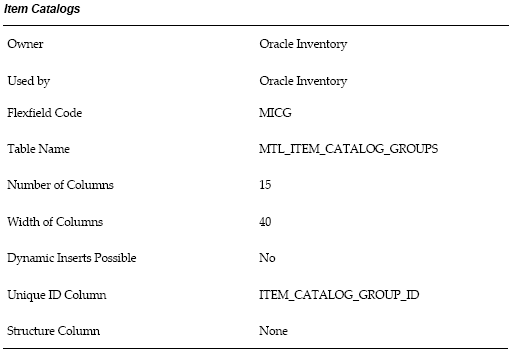
You must design and configure your Item Categories Flexfield before you can start defining items since all items must be assigned to categories. You can define multiple structures for your Item Categories Flexfield, each structure corresponding to a different category grouping scheme. You can then associate these structures with the categories and category sets you define.
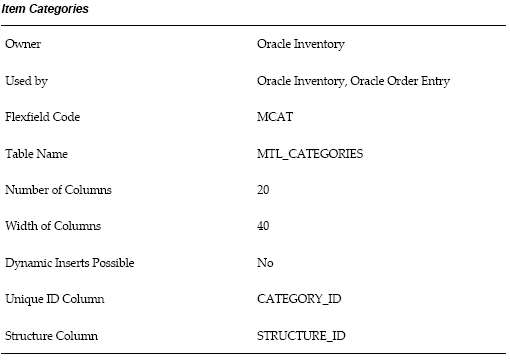
You can use the Stock Locators Flexfield to capture more information about stock locators in inventory. If you do not have Oracle Inventory installed, or none of your items have locator control, it is not necessary to set up this flexfield.
If you keep track of specific locators such as aisle, row, bin indicators for your items, you need to configure your Stock Locators Flexfield and implement locator control in your organization.
This key flexfield supports only one structure.
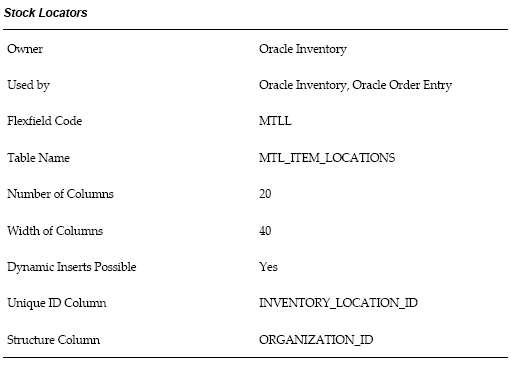
This key flexfield supports only one structure.
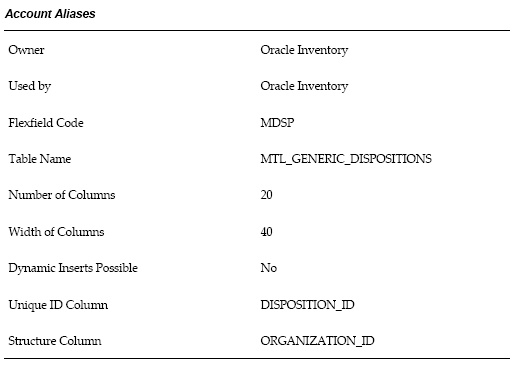
The Sales Order Flexfield is a key flexfield used by Oracle Inventory to uniquely identify sales order transactions Oracle Order Management interfaces to Oracle Inventory.
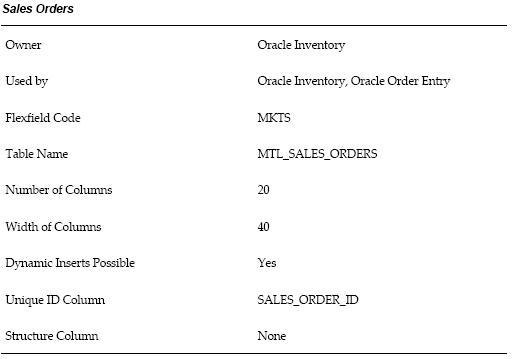
Oracle Inventory defines a unique ID for each order in MTL_SALES_ORDERS based on this flexfield. The Inventory unique ID, as opposed to the Order Management unique ID, is used throughout Oracle Manufacturing applications.

Leave a Reply
Want to join the discussion?Feel free to contribute!